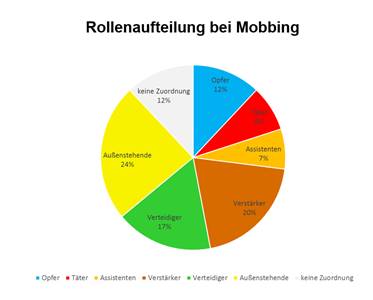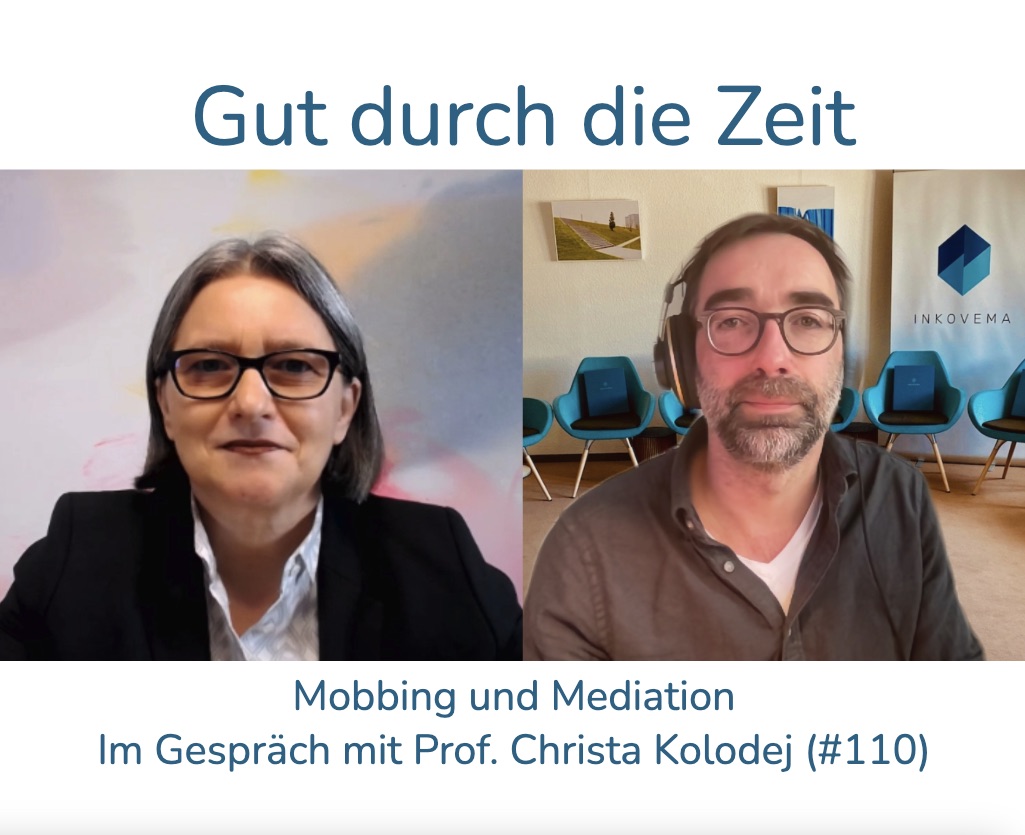INKOVEMA Podcast „Well through time“
#110 – Bullying and mediation
When does mediation come into play as a conflict resolution procedure in cases of bullying allegations? In conversation with Prof Dr Christa Kolodej (Vienna)
Well through time. The podcast about mediation, conflict coaching and organisational consulting.
Prof Dr Christa Kolodej: Lives in VIENNA, teaches at the Karl Franzens University of Graz, studied psychology and sociology, author of specialised books
Contents:
In an interview with Professor Kolodej, the discussion sheds light on the extent to which mediation is an appropriate conflict resolution procedure in cases of bullying, the conditions under which it comes into play and what mediators need to look out for. Ms Kolodej has been working, researching and publishing on the topic for three decades and explains the developments, particularly in Austria. Some parallels and differences to Germany will also be discussed.
On bullying in general
Bullying is a serious problem that affects many people in schools, workplaces and even in their own communities. It involves the deliberate and sustained exercise of power and control over another person – through words or actions. Bullying can be perpetrated by a single person or by a group.
Some of the most common forms of bullying are verbal abuse, social exclusion, harassment and threats. Verbal abuse involves insulting or humiliating words, social exclusion involves excluding a person from group activities or spreading rumours about them, harassment involves repeated behaviour that is unpleasant or threatening and threats involve threats against a person's safety or well-being.
Being the victim of bullying can have both physical and psychological effects. Physical symptoms can include sleep disturbances, headaches, gastrointestinal problems and even physical injuries. Psychological symptoms can include anxiety, depression, self-doubt and even suicidal thoughts.
It's important to realise that bullying doesn't just affect children and young people, but also adults in workplaces and even in the community. Workplace bullying can have career and financial implications, while bullying in the community can make people feel unsafe to engage or socialise.
To prevent and tackle bullying, it is important that adults and managers are sensitised and that they respond to bullying when they see or hear about it. Schools, workplaces and communities should also implement anti-bullying policies and programmes to raise awareness and change behaviour.
Research has never been in search of the „bullying personality“!


Literature:
- Kolodej, C. (2018): Mobbing, psychological terror in the workplace and at school. Facultas, Vienna (3rd expanded edition).
- Kolodej, C. (2008): Bullying counselling. Case studies and solutions for counsellors and victims. WUV. Vienna.
- Kolodej, C. (2018): Psychological self-help for bullying. Confidence, trust, change. Springer, Wiesbaden.
- Kolodej, C. (2019): Structural Constellations for Conflicts, Bullying and Mediation. Vom sichtbaren Unsichtbaren, Springer Gabler, Wiesbaden (2nd expanded edition).
- Kolodej, C. & Smutny, P. (2020): Management and organisational responsibility in cases of bullying. Psychological and legal analyses and recommendations. Springer Gabler Verlag, Wiesbaden.
- Kolodej, C. & Ertl S. (2022): Mediation with representation and non-violent communication. On the possibilities of togetherness. Springer Gabler, Wiesbaden.





Leave A Comment